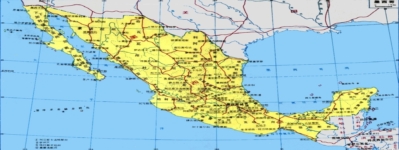How Technology Transformed Fishing and Entertainment #99
1. Introduction: The Evolution of Fishing and Entertainment through Technology
Historically, fishing was a manual pursuit relying heavily on traditional methods and simple tools such as spears, nets, and basic boats. Entertainment related to fishing often involved communal activities, storytelling, and local competitions that fostered cultural bonds. These practices, while effective, limited accessibility and efficiency.
With the advent of technological innovations, both fishing and related entertainment have undergone profound transformations. From early mechanization to sophisticated digital tools, technology has expanded the reach, effectiveness, and cultural significance of fishing activities. This article explores these developments, illustrating their interconnectedness and impact on society and the environment.
- The Historical Intersection of Technology and Fishing
- Modern Technological Innovations in Fishing
- The Role of Technology in Enhancing Entertainment in Fishing
- Case Study: Fishin’ Frenzy – A Modern Digital Fishing Experience
- Scientific Discoveries Enabled by Technology
- Non-Obvious Perspectives: Ethical, Environmental, and Future Considerations
- Unusual Facts Highlighting Technological Impact
- Conclusion: The Ongoing Journey of Technology in Shaping Fishing and Entertainment
2. The Historical Intersection of Technology and Fishing
a. Early innovations: from basic tools to mechanization
Ancient societies developed simple yet effective tools such as harpoons, fishing spears, and rudimentary traps. The invention of boats with paddles or sails marked the beginning of expanding fishing territories. The Industrial Revolution introduced mechanized boats powered by steam engines, significantly increasing catch capacity and enabling fishers to venture farther into open waters.
b. How technology changed fishing efficiency and accessibility
Technological progress made fishing more efficient and accessible, transforming it from a subsistence activity to a commercial enterprise. Mechanical nets, refrigeration, and later, motorized vessels reduced time and labor, allowing for larger catches and wider distribution. These advancements also enabled fishing communities to thrive and adapt to changing economic conditions.
c. Impact on fishing communities and cultural practices
While technological improvements boosted productivity, they also altered social dynamics and cultural traditions. Some communities faced overfishing and environmental challenges, prompting the need for sustainable practices. The traditional knowledge of local fishers often integrated with new technologies to maintain balance between economic growth and ecological preservation.
3. Modern Technological Innovations in Fishing
a. Advanced sonar and fish-finding equipment
Modern sonar systems and fish-finding sonars use sound wave technology to detect fish beneath the water surface with high precision. These tools enable fishers to locate schools of fish rapidly, reducing time spent searching and increasing catch efficiency. Innovations such as side-scan sonar provide detailed images of underwater habitats, aiding sustainable fishing practices.
b. GPS and mapping technologies for precise fishing locations
Global Positioning System (GPS) devices allow fishermen to mark productive spots and navigate complex waterways accurately. Coupled with geographic information systems (GIS), these tools facilitate detailed mapping of fishing areas, contributing to better resource management and reduced bycatch.
c. Automation and robotic fishing vessels
Automation has led to the development of robotic vessels capable of operating autonomously for extended periods. These vessels utilize AI algorithms for navigation and fishing operations, minimizing human labor and increasing safety. Such innovations are transforming large-scale commercial fishing, pushing the boundaries of efficiency.
4. The Role of Technology in Enhancing Entertainment in Fishing
a. Virtual and augmented reality fishing experiences
Virtual reality (VR) and augmented reality (AR) technologies now offer immersive fishing experiences that simulate real-world environments. These platforms enable users to practice skills, explore exotic locations, or enjoy fishing for entertainment regardless of weather or access restrictions. For example, VR setups can recreate serene lakes or deep-sea adventures, engaging users in realistic scenarios.
b. Mobile apps and online platforms for fishing competitions and communities
Smartphone applications and websites facilitate global fishing communities, enabling users to share catches, participate in virtual tournaments, and access educational content. These platforms foster a sense of camaraderie and learning, expanding fishing’s entertainment and social aspects beyond physical boundaries. They often incorporate GPS tracking, weather updates, and catch logging to enhance user experience.
c. The influence of video games, exemplified by Fishin’ Frenzy, in popularizing fishing culture
Video games have played a significant role in introducing fishing to wider audiences. Titles like pelican bird big money payouts exemplify how digital platforms blend realistic fishing mechanics with entertainment. Such games teach players about fishing techniques, fish species, and environmental considerations, fostering interest and knowledge in the sport.
5. Case Study: Fishin’ Frenzy – A Modern Digital Fishing Experience
a. Overview of the game and its features
Fishin’ Frenzy is a popular online slot game that integrates fishing themes with engaging gameplay mechanics. It features vibrant aquatic graphics, interactive bonus rounds, and opportunities for big payouts, especially through symbols like pelican birds that hold three times more than their stomachs, a nod to natural adaptations.
b. How it incorporates real-world fishing concepts and technologies
The game employs realistic sound effects, visual cues, and fishing-related symbols to simulate the thrill of fishing. It also incorporates concepts such as bait, fish species, and underwater environments, providing players with an educational glimpse into actual fishing practices. This digital experience exemplifies how modern entertainment leverages real-world concepts to engage audiences.
c. The game’s role in education and entertainment
Beyond entertainment, Fishin’ Frenzy serves as an educational tool by familiarizing players with fishing terminology and strategies. It also demonstrates how digital platforms can inspire interest in the sport, potentially encouraging real-world fishing pursuits and environmental awareness.
6. Scientific Discoveries Enabled by Technology
a. Deep-sea exploration: catching the deepest fish at 8,370 meters
Advancements in submersible technology and remotely operated underwater vehicles have enabled scientists to explore the uncharted depths of our oceans. In 2017, researchers used a specialized deep-sea submersible to document fish species at depths reaching 8,370 meters—challenging previous assumptions about the limits of marine life. These discoveries expand our understanding of biodiversity and adaptation in extreme environments.
b. Tracking and studying marine life with satellite and underwater drone technology
Satellite tracking and underwater drones provide real-time data on marine animal movements, migration patterns, and population dynamics. These tools aid conservation efforts by identifying critical habitats and tracking the impacts of climate change. For example, drone technology has been used to monitor whale populations without intrusive methods, ensuring minimal disturbance to delicate ecosystems.
c. The importance of technological advancements in marine biology
Overall, technological innovations have revolutionized marine biology, allowing scientists to explore previously inaccessible environments, document species diversity, and develop strategies for ocean conservation. These efforts are vital for sustainable fishing and protecting marine ecosystems for future generations.
7. Non-Obvious Perspectives: Ethical, Environmental, and Future Considerations
a. How technology affects marine ecosystems and conservation efforts
While technology aids in conservation through data collection and monitoring, over-reliance or misapplication can lead to ecological imbalances. For instance, high-efficiency fishing gear may result in overfishing, threatening species and habitats. Balanced approaches integrating technological tools with sustainable practices are essential.
b. Ethical debates surrounding technological enhancements in fishing
Emerging technologies such as genetic modification and AI-driven fishing raise ethical questions about human intervention in ecosystems. The debate centers on whether such tools could lead to unintended consequences, affecting biodiversity and ecological stability. Responsible innovation and regulation are critical to address these concerns.
c. Future trends: AI, machine learning, and sustainable fishing innovations
Future developments include AI algorithms for predicting fish migrations, machine learning for optimizing catch quotas, and eco-friendly gear innovations aimed at reducing bycatch. These trends promise to enhance fishing efficiency while minimizing environmental impacts, aligning technological progress with ecological responsibility.
8. Unusual Facts that Highlight Technological Impact
| Fact | Description |
|---|---|
| Pelican Beak Adaptation | Pelicans can hold three times more than their stomachs, a remarkable adaptation facilitated by evolutionary pressures—highlighting how biological evolution and environmental challenges shape species. |
| Longest Fishing Rod | Measuring 73.7 feet, the world’s longest fishing rod exemplifies engineering feats that push the boundaries of traditional equipment, enabling unique fishing techniques and research applications. |
| Deepest Fish Caught | The deepest fish ever caught was at 8,370 meters below the surface, illustrating how technology such as deep-sea submersibles extends the frontiers of exploration and discovery. |
9. Conclusion: The Ongoing Journey of Technology in Shaping Fishing and Entertainment
The integration of technology into fishing and related entertainment forms a complex web of progress, cultural shifts, and ecological considerations. From early innovations to cutting-edge AI and sustainable practices, each development has contributed to a richer understanding and experience of the aquatic world.
Striking a balance between technological advancement and ecological responsibility remains a paramount challenge. As future trends like machine learning and eco-efficient gear emerge, the goal is to ensure that fishing remains sustainable, educational, and culturally enriching for generations to come.
“Technological progress in fishing reflects our broader quest to understand and coexist with nature—advancing without compromising the planet’s health.”
In essence, technology continues to shape the way we engage with fishing and entertainment, demonstrating that innovation driven by curiosity, responsibility, and sustainability can lead to a harmonious future.









